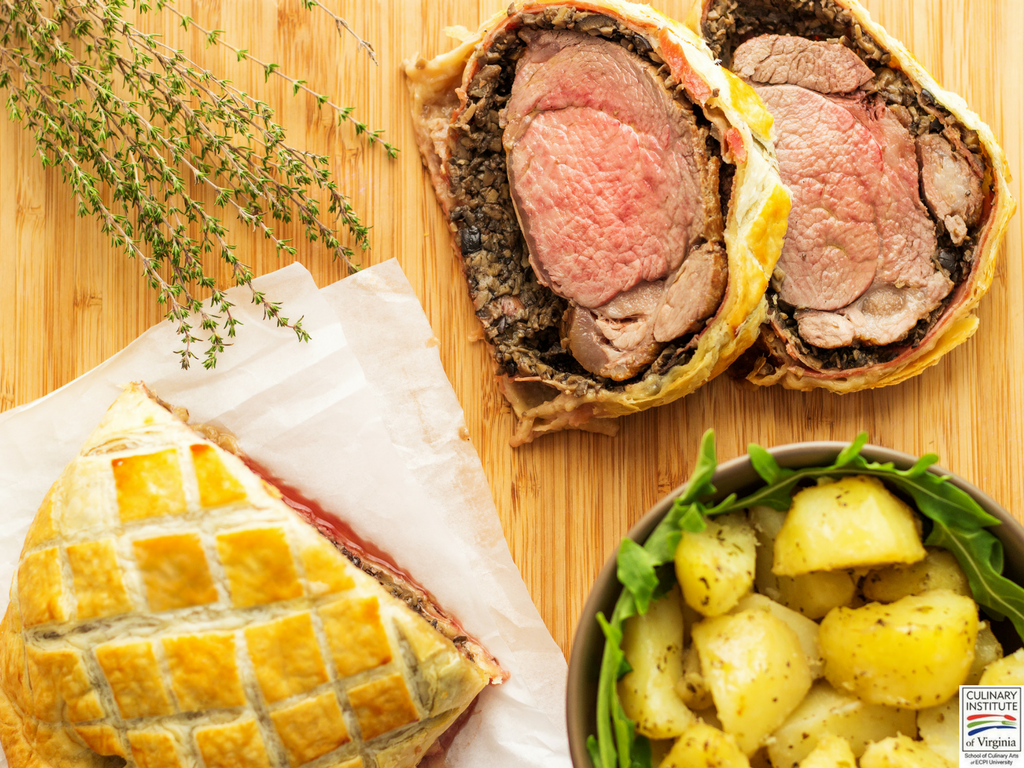Most Difficult Meal to Cook: How Culinary Arts School Prepares you for the Challenge
If you think being able to cook at all is an impressive feat, you're not entirely wrong - a full 28% of Americans report being completely unable to do so. However, this shouldn't be taken to mean that there aren't vastly different levels of skill involved. There is a grand pantheon of meals that simply cannot be properly executed by an amateur cook lacking the necessary years of education and experience. Here is a short list of some of the most devilishly difficult dishes that only a true formally trained culinary arts master can pull off.
Risotto
Risotto is a combination of Arborio rice and stock (and sometimes extra additions like butter, wine and onions) carefully cooked into a creamy texture. A deceptively rich meal has the taste and feel of a dairy-heavy dish that doesn't necessarily need to be made with any dairy at all.
It can be delicious when it's done right, but it can also easily go wrong. Risotto made by lesser chefs can turn into a gooey puddle on the plate or clump together and fall apart. You want your risotto to be almost silky in texture, smooth and substantial, and be able to more or less hold its shape when you set it down. Achieving this requires an incredible amount of focus from the chef, as you must continually observe how much water the rice is absorbing and stir very frequently to ensure it all combines well. That's a level of finesse that goes beyond the abilities of most home cooks.
Consommé
Consommé is a dish of concentrated, clarified broth that is far more complex to make than it looks. Cooking meats, celery, carrots, onion and tomatoes together in water (all solids are removed before serving, of course) typically make it. It's a simple dish, but it's considered a delicacy by foodies everywhere.
Part of the reason for this is that it is an incredibly labor-intensive food to make. The process of removing all the fat and impurities from the liquid involves a long period of simmering the liquid with egg whites added - this makes the objectionable parts rise to the top and clump together so they can easily be skimmed out. It's then filtered and skimmed several more times, sometimes over the course of several days, until it's perfectly clear. Even the best chefs find this dish taxing since it requires so much diligent work.
Beef Wellington
If you've ever seen even five minutes of the hit cooking show Hell's Kitchen, you've probably seen a beef Wellington-related meltdown. Judge Gordon Ramsay is famous for his dissatisfaction with the quality of these dishes among his initiates, which should tell you something about how daunting the task really is. The dish consists of a seared beef fillet that is then covered in pâté and minced mushrooms and covered again with puff pastry.
This dish is all about precision. The inside must be tender and rare, but definitely not raw or overcooked. This is hard to achieve on any piece of meat, but this one is particularly tricky because of its two cooking methods (fried then baked) and its impenetrable coating (meaning you can't check whether it's done by sight or by touch). Even worse, you won't know if you've done it right until you actually slice it open, at which point it will no longer cook evenly if you return it to the oven. There's no way around it - you have to know exactly what you're doing and be completely confident in those abilities to successfully make this dish.
Seafood
This meal is a little wider in scope than the rest, and includes any sea-based proteins, from scallops to oysters to squid and even octopus. These meats can be cooked and seasoned in a variety of ways, but no matter what you do with them, they will always be challenging to work with.
There are two primary reasons for this. You're working with a strong, unusual flavor profile that you've probably not had much experience with due to the high cost of these ingredients, which already makes this a tricky thing to do. On top of that, seafood has some incredibly brief cooking times compared to most other proteins, and is prone to becoming rubbery and unpleasant after as little as an extra minute exposed to heat. It takes a practiced hand to make something appealing under such constraints, which is why it is a popular offering in high-end restaurants.
How Can I learn How to Make These Complicated Dishes?
If you see the above as a personal challenge to your cooking prowess, you will need the skills to execute these dishes and they can’t all be learned from YouTube videos. Formal education is imperative for chefs because it teaches them not only how to cook, but why the food reacts the way it does through science and practice. If you want to cook the best Beef Wellington in the world, you will need to step inside a culinary arts classroom first.
Do you want to learn how to cook these dishes to wow customers? If you are ready to take the next step and earn an Associate of Applied Science in Culinary Arts, consider ECPI University’s Culinary Institute of Virginia. With day or night classes, you can choose what works best for your schedule while you learn. For more information, connect with a helpful admissions advisor today.
It could be the Best Decision You Ever Make!
DISCLAIMER – ECPI University makes no claim, warranty, or guarantee as to actual employability or earning potential to current, past or future students or graduates of any educational program we offer. The ECPI University website is published for informational purposes only. Every effort is made to ensure the accuracy of information contained on the ECPI.edu domain; however, no warranty of accuracy is made. No contractual rights, either expressed or implied, are created by its content.
Gainful Employment Information – Culinary Arts - Associate’s
For more information about ECPI University or any of our programs click here: http://www.ecpi.edu/ or http://ow.ly/Ca1ya.





